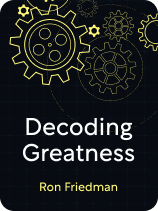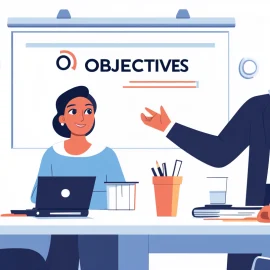

This article is an excerpt from the Shortform book guide to "Decoding Greatness" by Ron Friedman. Shortform has the world's best summaries and analyses of books you should be reading.
Like this article? Sign up for a free trial here.
What are some ways to test the waters before you put your product on the market? How can you protect your reputation while you experiment with new things?
To be an innovator, you have to take creative risks. Experimentation—and failure—come with the territory. In Decoding Greatness, Ron Friedman shares four ways to lower the stakes for inevitable failures on the road to innovation and success.
Continue reading to learn how to mitigate risk as you learn and create.
How to Mitigate Risk
Getting good at anything requires risk. Creativity and effective practice both require you to stretch yourself. This means that, sooner or later, you’re bound to fail. Friedman explains that this kind of failure is a good thing—it’s how you learn. But, he also acknowledges that the possibility of failure can prevent necessary creative risk-taking if the stakes are too high, such as when a failure might damage your reputation or your financial position. The answer, Friedman says, is to lower the stakes of failure by strategically decreasing your risk. He shares his advice on how to mitigate risk so that you can feel free to experiment.
(Shortform note: Although it’s typically possible to make risks safer using the strategies we outline below, sometimes, the best choice really is to shut down a creative venture that’s not working. In Creativity, Inc., Pixar co-founder Ed Catmull agrees with the notion that failure is key to creativity, but he also argues that if you’re not learning from your failures and gradually improving, you might have to let go of a project (or the people involved, if you’re working with others) before you lose more than you can afford to.)
Strategy #1: Find a Test Audience
A test audience lets you try out your new idea and get feedback from your intended audience while you’re still figuring things out and the stakes are low. For example, if you’re developing a new board game, you could assemble a playtest group to gauge player reactions and get feedback on your rules and game mechanics before you spend lots of money on production.
(Shortform note: In The Minimalist Entrepreneur, Sahil Lavingia outlines a detailed process for finding and working with a test audience before you launch a new venture. He recommends that you join a community you care about, identify a problem in that community, then offer a product or service that addresses that problem. At that point, you can offer your solution within that community on a freelance basis before you try to formally launch a business—this helps you figure out what people care about and what they’re willing to pay for.)
Strategy #2: Sell Before You Create
Friedman suggests finding a way to sell your product or service before you create it (such as by creating a prototype and taking a list of preorders). This technique helps you gauge how much demand there is before you invest your resources. For example, if you’re thinking about expanding your coffee shop by offering catering services to local businesses, you could offer a waitlist where businesses can sign up for such a service—this will help you gauge whether the new idea is viable.
(Shortform note: One way to sell before you create is to build what Eric Ries calls a Minimum Viable Product (MVP). In The Lean Startup, Ries describes several different types of MVPs: For example, you could build a webpage that describes and shows mockups of your product and asks users to sign up. Or, you could launch a product or service at a smaller scale than you actually intend—for example, by building a product by hand at first until you generate enough demand to justify investing in an automated production process. Whatever type of MVP you choose, the goal is to make the minimum investment necessary to figure out whether people want what you’re offering.)
Strategy #3: Use an Alias
Friedman suggests working under a pseudonym, stage name, or sub-brand while trying out new ideas. Doing so allows you to experiment without damaging your established reputation, confusing your audience, or creating false expectations. For example, Major League Baseball commonly pilots potential rule changes and other experimental practices at the minor league level so that they can see what works and what doesn’t before altering their main product—the major league game.
(Shortform note: In Loonshots, Bahcall suggests that another benefit of keeping innovation separate from your established product or service is that innovating and executing require different skill sets—experimental risk-taking might be a good idea when you’re trying to be creative, but when you’re implementing an established idea, it’s better to be consistent.)
Strategy #4: Diversify Your Career
Friedman recommends keeping a day job as a steady source of income that allows you to take more risks outside of work. But he also recommends getting creative in how you leverage your talents to make money. The more you spread yourself around, Friedman explains, the more you diffuse the risk associated with any one venture. For example, if you’re a musician, you can make money playing shows and selling your music. But you could also earn money through related work such as composing a video game soundtrack or using your audio skills to freelance as a podcast producer.
(Shortform note: Diversifying your career could bring benefits beyond spreading out your risk—it might also fuel long-term growth by exposing you to new ideas, people, and opportunities. The authors of The Great Mental Models Volume 3 suggest that these new experiences increase your surface area. In chemistry and physics, the more surface area an object has, the more connections it has to the world around it, and the more easily it bonds or reacts with other objects. Likewise, the authors argue, if you increase your metaphorical surface area by seeking out varied experiences, you increase your chances to learn, grow, and build on your existing skills and connections.)

———End of Preview———
Like what you just read? Read the rest of the world's best book summary and analysis of Ron Friedman's "Decoding Greatness" at Shortform.
Here's what you'll find in our full Decoding Greatness summary:
- The secret shortcut to elite performance and creative innovation
- How to reverse engineer someone else's work to create your own
- How to lower the stakes of failure by mitigating your creative risks






